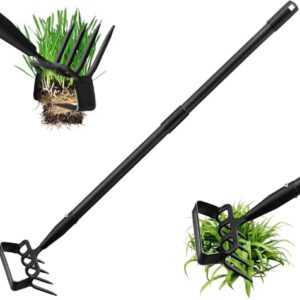Are you looking to expand your gardening skills and try your hand at plant propagation? Maybe you want to multiply your favorite plants or save money by growing your own instead of buying new ones. Whatever your reason, plant propagation can be a fun and rewarding way to grow your garden. In this ultimate plant propagation guide, we’ll explore expert tips and techniques to help you succeed.
First things first, let’s talk about what plant propagation actually is. Simply put, it’s the process of creating new plants from existing ones. There are several methods of plant propagation, including seed propagation, division, cuttings, and layering. Each method has its own benefits and challenges, so it’s important to understand the differences before you get started.
Seed propagation is probably the most familiar method, as it’s how most plants reproduce in nature. To propagate plants from seed, you’ll need to collect mature seeds from your plants and sow them in a suitable growing medium. This method is great for growing annuals and some perennials, but keep in mind that it can take longer for seeds to germinate and grow into mature plants compared to other methods.
Division is another common method of plant propagation, particularly for herbaceous perennials. This method involves splitting a mature plant into multiple smaller plants, each with its own root system. Division is a quick and easy way to propagate plants, but it may not be suitable for all types of plants.
Cuttings are probably the most popular method of plant propagation among gardeners. This method involves taking a cutting from a parent plant and encouraging it to root and grow into a new plant. There are different types of cuttings, including stem cuttings, leaf cuttings, and root cuttings, each with its own requirements for success. Cuttings can be taken from a wide range of plants, including houseplants, woody shrubs, and succulents.
Layering is a less common but effective method of plant propagation. This technique involves bending a flexible stem of a parent plant and burying it in the soil, encouraging it to form roots and grow into a new plant. Layering is ideal for plants that are difficult to propagate through other methods, such as roses and magnolias.
Now that you have a basic understanding of the different methods of plant propagation, let’s dive into some expert tips and techniques to help you succeed in your propagation endeavors.
1. Choose healthy parent plants: When selecting plants for propagation, choose healthy, disease-free specimens that are actively growing. Sick or stressed plants are less likely to produce successful cuttings or divisions.
2. Timing is key: Timing is crucial when it comes to plant propagation. Some plants propagate best in spring or summer, while others prefer fall or winter. Research the specific requirements of the plant you’re propagating to ensure optimal success.
3. Use the right tools: Make sure you have sharp, clean tools for taking cuttings or dividing plants. Dull or dirty tools can damage plant tissues and reduce the chances of successful propagation.
4. Prepare your planting medium: Different plants have different requirements for rooting, so it’s important to use the right type of planting medium for your cuttings or divisions. Some plants prefer a well-draining mix of perlite and peat moss, while others do best in a soilless mix of vermiculite and sand.
5. Provide the right conditions: Proper lighting, temperature, and humidity are essential for successful plant propagation. Most cuttings require bright, indirect light and consistent moisture to root successfully. Investing in a heat mat or humidity dome can help create the ideal conditions for rooting.
6. Be patient: Plant propagation takes time, so be patient and don’t rush the process. It can take several weeks or even months for cuttings to root and grow into mature plants. Keep an eye on your cuttings and be prepared to wait for results.
7. Experiment and learn: The best way to become an expert in plant propagation is to experiment with different methods and plants. Keep track of what works and what doesn’t, and learn from your successes and failures along the way.
In conclusion, plant propagation can be a fun and rewarding way to grow your garden and expand your plant collection. By understanding the different methods of propagation and following expert tips and techniques, you can successfully propagate a wide range of plants and enjoy the satisfaction of watching them grow and thrive. So grab your gardening tools, pick your favorite plants, and get propagating!






